Background
The SEMI North America GEM 300 task force is part of the North America Information and Control Committee (I&CC or NA I&CC). Normally this task force meets in San Francisco as part of SEMICON West. However, this year the technical committee meetings are spread over several weeks and don’t coincide directly with SEMICON West. Additionally, the I&CC did not meet at all because SEMI regulations do not currently allow TC Chapter (Committee) voting in virtual meetings. That will hopefully change later this year, but for now inhibits the pace of SEMI standards development.
However, the GEM 300 task force did meet on Monday July 13, 2020, and continues to develop SEMI standards. I am co-leader of the NA GEM 300 task force, along with Chris Maloney from Intel. This blog is a summary of the current task force activities.
Pre-Meeting Summary
The table below contains a summary of the worldwide activities related to the GEM 300 task force as of the start of this summer’s meeting. There are corresponding task forces in the Japan and South Korea regions which are also active.
|
Region |
Ballot |
Standard(s) |
Status |
Topic |
|
South Korea |
5832 |
New |
Cycle 5, 2020 |
Generic Counter |
|
North America |
6348 |
E30 |
Published |
SEMI style/regulation conformance |
|
North America |
6572 |
E30 |
Development |
Add Stream 21, Cleanup Process Program Management. |
|
North America |
6552 |
E5 |
Cycle 5, 2020 |
Data collection setup, terminology |
|
North America |
6598 |
E37, E37.1 |
Cycle 5, 2020 |
Standardize TCP/IP port numbers |
|
North America |
6597 |
E173 |
Adjudication Pending |
Minor updates, clarification Awaiting I&CC adjudication from cycle 2, 2020 voting (no negatives) and the task force recommendation from Spring 2020. |
|
North America |
6647 |
E116 |
Development |
Recommendations from the ABFI task force |
Current Ballot Activity
Two ballots were adjudicated during the most recent GEM 300 task force meeting. For those of you new to the standards development process, the term “adjudication” means that we review the results of the voting and recommend handling of all negative votes and comments received. The recommendations by the task force are then presented to and finalized at the committee level. Since the North America I&CC did not meet, the failed and super-clean ballots are being transferred to other regions (probably Taiwan) for further processing. Passed ballots with any negatives or comments are put on hold until NA I&CC meets so that the merits of the comments and overridden negatives can be evaluated.
6552A E5
This ballot modifies the E5 SECS-II standard. The ballot included three line-items, each of which is voted on separately
- This is the most exciting activity in this ballot because it will give GEM host software much better tools for managing and testing GEM data collection. The first line item proposed adding several new messages to the E5 standard including a message to:
- Query the list of defined report identifiers
- Query report definitions
- Query a list of event report links
- Query the list of enabled events (this could already be done using Status Variable EventsEnabled)
- Query the list of streams and functions configured for spooling
- Query the list of defined trace identifiers
- Query trace definitions
- Establish proper definitions for status variables, data variables and equipment constants. Additionally, deprecate the usage of the data item “DVNAME” which has generated confusion for years since it means a data variable identifier and not a data variable name.
- Clarify the usage of message S7F17/F18. This message allows deletion of one or more recipes, but only returns a single acknowledgement code. The new clarification defines what to expect when an error is returned.
Each of the line items had at least one comment or negative; therefore, none was super-clean. The GEM 300 task force decided to pass line items 1 and 3, but fail line item 2.
6598A E37
The primary purpose of this ballot is to clarify some confusing text related to the T8 timer. Additionally, there are other improvements related to recommended settings. The GEM 300 task force decided to fail this ballot.
New Ballot Activity
Here is a summary of the next set of ballots to expect from the NA GEM 300 task force planned to be presented for Cycle 7 voting later this year.
|
Ballot |
Specification |
Description |
|
6552B |
E5 |
A rework of ballot 6552A line item #2, which is described above. |
|
6598B |
E37 |
A rework of ballot 6598A described above. |
|
6647 |
E116 |
Recommendations from the ABFI task force to allow the GEM host to declare scheduled/unscheduled down time and for the equipment to declare an Engineering mode. This will allow E116 to map better to E10. |
|
6572 |
E30 |
A major change to the GEM standard to officially allow usage of Stream 21 for large unformatted recipes and E172 SEDD files, deprecation of some little used recipe alternatives like E42, implementation of the new E5 messages from ballot 6552A line item #1, and several other enhancements. Note that the ballot number will be changing due to a late scope change. |
|
? |
E148 |
Upgrade NTP from version 3 to version 4. |
Getting Involved
For those interested in participating, it is easy to join SEMI standards activities. Anyone can register at www.semi.org/standardsmembership.
All SEMI task force ballot activities are logged at http://downloads.semi.org/web/wstdsbal.nsf/TFOFandSNARFsbyCommittee?OpenView&Start=1&Count=1000&ExpandView
After joining the standards activities, anyone can get involved. The task forces post everything on the connected @ SEMI website https://connect.semi.org/home. The North America GEM 300 task force community is called “GEM 300 Task Force - North America”.
To find out more about SEMI Standards, GEM300, or to talk to standards expert, click the button below.





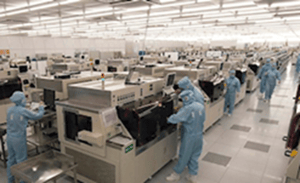 In order to reach the goals of Industry 4.0 and Smart Manufacturing, factories must be able to monitor and control manufacturing equipment remotely. Therefore the equipment must have a software interface to provide this functionality and the factory must be able to access and use this interface.
In order to reach the goals of Industry 4.0 and Smart Manufacturing, factories must be able to monitor and control manufacturing equipment remotely. Therefore the equipment must have a software interface to provide this functionality and the factory must be able to access and use this interface.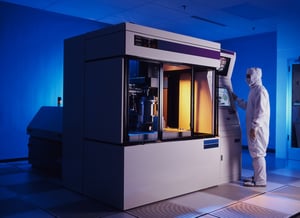
 Cimetrixは本年最後の業界エキジビションである、セミコンジャパン2019
Cimetrixは本年最後の業界エキジビションである、セミコンジャパン2019
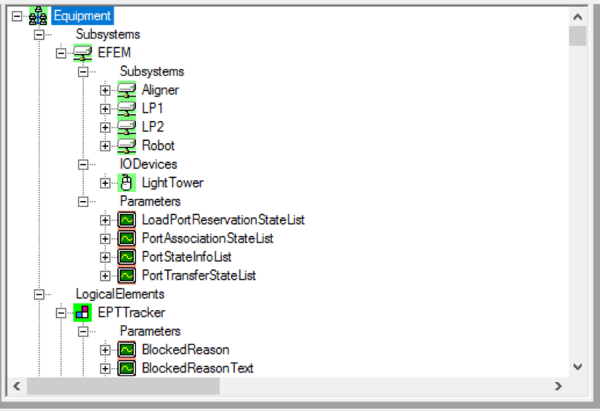
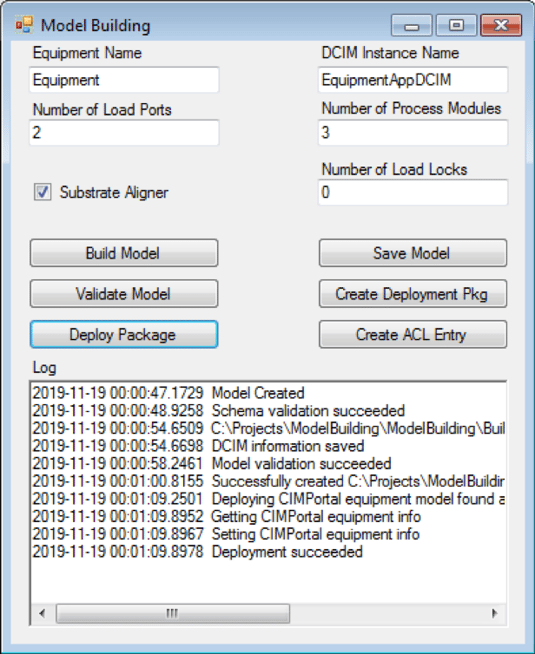

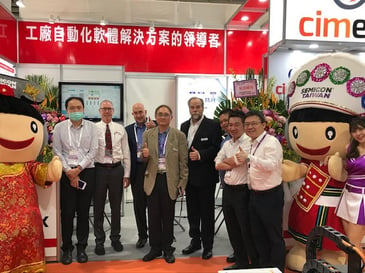
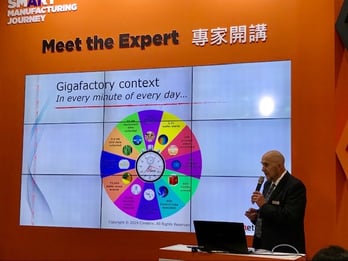
 台灣SEMICON將於9月18日至20日在台灣台北的TaiNEX 1(南港展覽館1館)舉行,主題為“引領智能未來”。這與Cimetrix的業務完全符合,我們將在智能製造業展出大廳位於一樓J3056展位。我們邀請所有人來拜訪我們的展位
台灣SEMICON將於9月18日至20日在台灣台北的TaiNEX 1(南港展覽館1館)舉行,主題為“引領智能未來”。這與Cimetrix的業務完全符合,我們將在智能製造業展出大廳位於一樓J3056展位。我們邀請所有人來拜訪我們的展位 Cimetrix participated in the recent European Advanced Process Control and Manufacturing (apc|m) Conference, along with over 150 control professionals across the European and global semiconductor manufacturing industry. This site of this year’s conference was Villach, Austria, a picturesque town nestled in the eastern Alps just north of the Italian border in the state of Carinthia. This region is home to a number of high-tech companies and institutions all along the semiconductor manufacturing value chain, and since it was the first time the conference was held in Villach, the local hosts rolled out the red carpet.
Cimetrix participated in the recent European Advanced Process Control and Manufacturing (apc|m) Conference, along with over 150 control professionals across the European and global semiconductor manufacturing industry. This site of this year’s conference was Villach, Austria, a picturesque town nestled in the eastern Alps just north of the Italian border in the state of Carinthia. This region is home to a number of high-tech companies and institutions all along the semiconductor manufacturing value chain, and since it was the first time the conference was held in Villach, the local hosts rolled out the red carpet. 
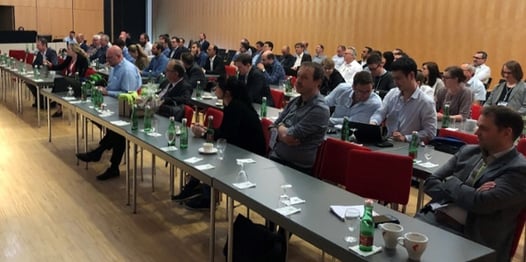 Other highlights of the conference included:
Other highlights of the conference included: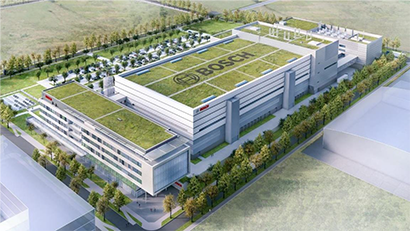
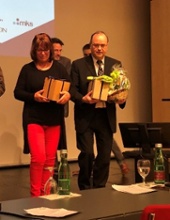 Another invited talk from BMW was delivered by Rainer Hohenhoff which covered “Product Data and Product Life Cycle Management in the face of new business models of the automotive industry.” In short, it discussed many of the ways a car company might make money even after people stop buying as many cars as they do today… and what collisions (pun intended) you could expect in the market as service companies like Google, Amazon, UBER, and others converge on the transportation consumer.
Another invited talk from BMW was delivered by Rainer Hohenhoff which covered “Product Data and Product Life Cycle Management in the face of new business models of the automotive industry.” In short, it discussed many of the ways a car company might make money even after people stop buying as many cars as they do today… and what collisions (pun intended) you could expect in the market as service companies like Google, Amazon, UBER, and others converge on the transportation consumer. 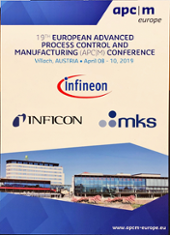 The insights gained from these and the other 30+ presentations are too numerous to list here, but in aggregate, they provided an excellent reminder of how relevant semiconductor technology has become for our comfort, sustenance, safety, and overall quality of life.
The insights gained from these and the other 30+ presentations are too numerous to list here, but in aggregate, they provided an excellent reminder of how relevant semiconductor technology has become for our comfort, sustenance, safety, and overall quality of life. 

